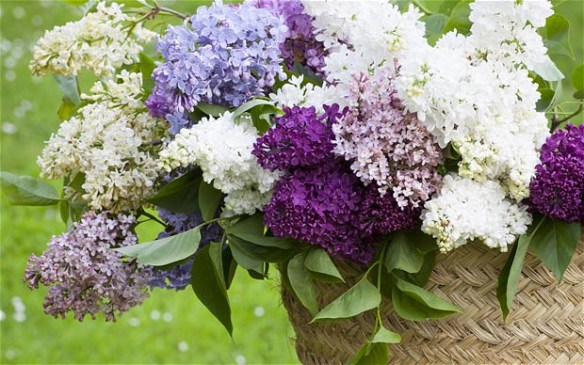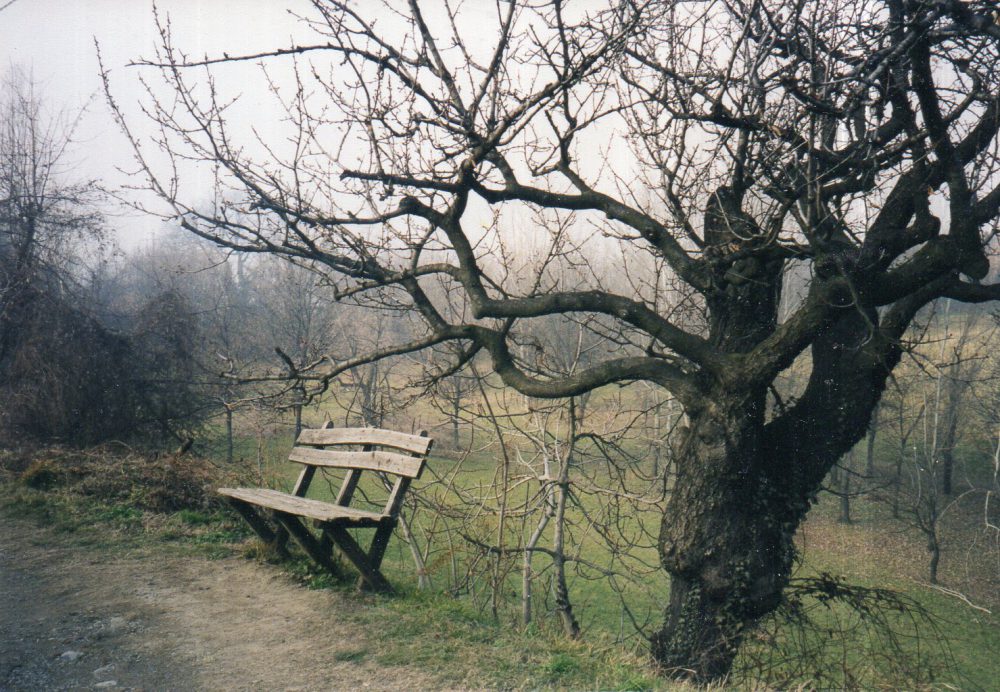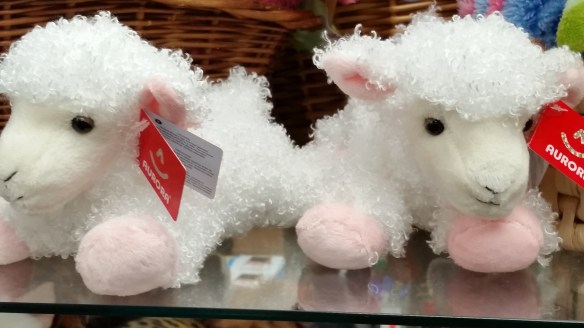
My father had two British friends, a married couple, who had at some point taken up residence in the small town where we lived. I remember they had a black, cast iron lion and unicorn on either side of the stone doorstep of their home. In addition, for years I had two small china ornaments they had given me. I don’t know how old I was when I visited with them, perhaps four or five. I can recall only their kindly smiles. When they passed on, they were buried in our local cemetery.
Two pink granite headstones marked their resting place. They were large, highly polished stones, and stood out among the simpler monuments. Every Memorial Day my father would purchase flowers and plant them on their graves. Although I don’t recall his telling me anything about them, they must have been special friends to him. He was one who believed in honoring those who had passed on. His own father died in World War I, when he was only eight years old.
For me especially, Memorial Day brings to mind my dear ones who have passed me on the road to the larger life, where they have their next assignment–whatever it may be. I have pictures of them, both in my mind and in reality, where I can catch a glimpse of them as they once were. Occasionally, though especially when I’m engaged in a task in my kitchen, I catch a whisper from someone I loved dearly and still do. They come into my mind and I see them smile as they used to do when we were together. It is as if they are telling me they are happy and well.
There is a smooth stone on my coffee table inscribed with these words: “My friends are the loveliest flowers in the garden of my life.” I treasure it as a memento from someone special who lit up my life for a time a few years ago. We were near neighbors and saw one another almost very day. A brave and valiant woman, she was a wonderful example of positive aging. Though she had many difficulties and illnesses she scarcely ever complained and did the best she could to carry on in a cheerful fashion.
In my mind, while I am fixing dinner, I often hear another of my late friends with whom I had many phone conversations: “What are you having for dinner that’s good?” she would ask. We would chat about cooking and trade ideas. In my recipe collection I have one of hers written out in her own handwriting. When I make a recipe I was given by a late friend, it is especially tasty because of my recollection of its origin. How precious are the memories of those we have loved and now lost to time.
Memories of loving friends who have pasted on are such a treasure. They are a bouquet fragrant with the perfume blended from our combined experiences, the times we have shared, the gifts we have given one another. Memorial Day brings to mind many memories of my dear ones no longer within reach of the telephone or email. As I turn them over in my mind, I feel again the love we shared. I see again their smiles and welcoming arms and I have no doubt one day we will meet and share again.

 My mother did not have good training for the task of mothering. Her mother was the wife of a diplomat and spent her days doing what she needed to do to support my mother’s father in his position. Her children were cared for by nursemaids and tutors. I knew her briefly: a proper, formal woman who came to live briefly in the states in the late forties. I was a young teen at the time, not very interested in this elderly person. Now of course I wish I had asked her more about her life. She returned to Germany and passed on soon after. Ill prepared as she was, my mother did the best she could, and I honor her for it.
My mother did not have good training for the task of mothering. Her mother was the wife of a diplomat and spent her days doing what she needed to do to support my mother’s father in his position. Her children were cared for by nursemaids and tutors. I knew her briefly: a proper, formal woman who came to live briefly in the states in the late forties. I was a young teen at the time, not very interested in this elderly person. Now of course I wish I had asked her more about her life. She returned to Germany and passed on soon after. Ill prepared as she was, my mother did the best she could, and I honor her for it. On Easter after church, we usually went to dinner with my Great Aunt Alice in her big house next door to the cottage my parents rented from her. She would have a beautiful table with gleaning silver, fragile china and sparkling crystal goblets set in the large dining room she used for formal occasions. Once the soup course was done and dishes removed, people brought in to help, carried around platters of meat and dishes of vegetables. These would be followed by dessert and finally, finger bowls with a sprig of green lemon verbena floating in them. The silver candy dishes with chocolates I eagerly eyed all through the meal were finally passed around.
On Easter after church, we usually went to dinner with my Great Aunt Alice in her big house next door to the cottage my parents rented from her. She would have a beautiful table with gleaning silver, fragile china and sparkling crystal goblets set in the large dining room she used for formal occasions. Once the soup course was done and dishes removed, people brought in to help, carried around platters of meat and dishes of vegetables. These would be followed by dessert and finally, finger bowls with a sprig of green lemon verbena floating in them. The silver candy dishes with chocolates I eagerly eyed all through the meal were finally passed around.
 It was the custom in my family when I was growing up to invite a non family member to the holiday dinners held at the home of my grandmother or my Great Aunt Alice, so that there wouldn’t be any “rows” as they were called…what could be termed family arguments. People were more likely to be on their best behavior with a relative stranger or at least a distant relative in their midst. The family I grew up in was rather vociferous.
It was the custom in my family when I was growing up to invite a non family member to the holiday dinners held at the home of my grandmother or my Great Aunt Alice, so that there wouldn’t be any “rows” as they were called…what could be termed family arguments. People were more likely to be on their best behavior with a relative stranger or at least a distant relative in their midst. The family I grew up in was rather vociferous. My parents taught me much by their example. My father served in many capacities as a volunteer. He was generous with his time, talents and energy. He read for a radio station that served the blind; for many years he held the position of treasurer for a non-profit orchestra; and he helped out in various capacities at the church to which he belonged.
My parents taught me much by their example. My father served in many capacities as a volunteer. He was generous with his time, talents and energy. He read for a radio station that served the blind; for many years he held the position of treasurer for a non-profit orchestra; and he helped out in various capacities at the church to which he belonged.
 What fun it would be to hop onto a time machine and return to the Christmas shopping of my childhood, after I had turned eight. How I enjoyed buying my parents small stocking presents at Grants and Woolworth’s. I want to return to the days when the ten dollars I had saved up sufficed to purchase about everything I wanted to buy for them. Maybe there would even be enough left over for an ice cream cone. I loved the way the store smelled when I walked in, and the overflowing counters with the glass part in front to make sure items didn’t fall off.
What fun it would be to hop onto a time machine and return to the Christmas shopping of my childhood, after I had turned eight. How I enjoyed buying my parents small stocking presents at Grants and Woolworth’s. I want to return to the days when the ten dollars I had saved up sufficed to purchase about everything I wanted to buy for them. Maybe there would even be enough left over for an ice cream cone. I loved the way the store smelled when I walked in, and the overflowing counters with the glass part in front to make sure items didn’t fall off. However, with my large family and my small budget I had to make sure everyone got enough and my children still remember how they had to cross off each fruit or cookie on their list whenever they took one. That was how I made sure no one felt cheated. These days with just me and Stephen to feed, I don’t have to ration treats. However, my recent diagnosis of diabetes means I cannot indulge my taste for sweets or for fruit the way I would like.
However, with my large family and my small budget I had to make sure everyone got enough and my children still remember how they had to cross off each fruit or cookie on their list whenever they took one. That was how I made sure no one felt cheated. These days with just me and Stephen to feed, I don’t have to ration treats. However, my recent diagnosis of diabetes means I cannot indulge my taste for sweets or for fruit the way I would like.